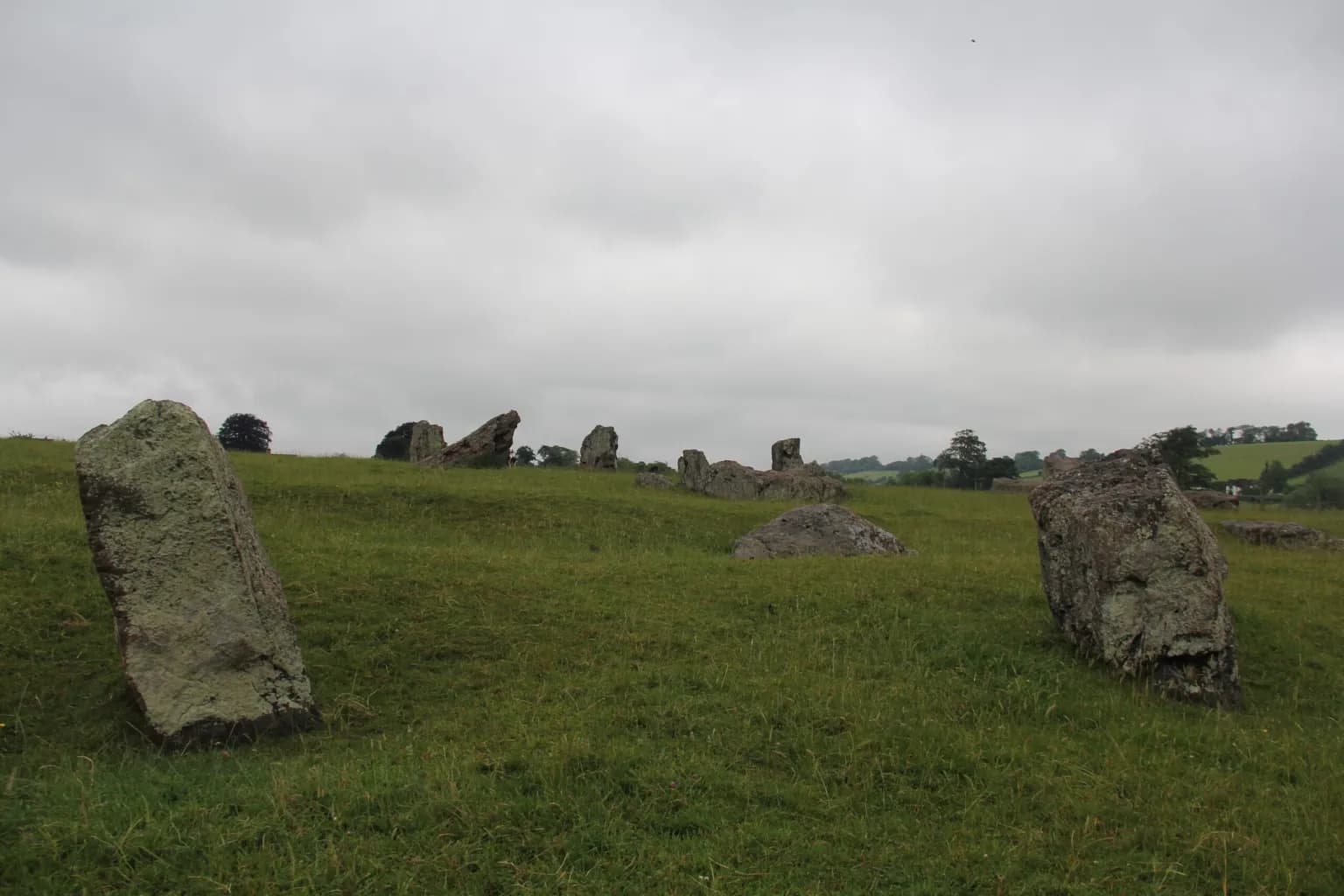
The village of Stanton Drew lies just over the border of Somerset. The stone circle sits just outside of the village, it is the second largest stone circle in England behind Avebury. The stone circle is estimated to have been built in the late Neolithic period, around 4500 years ago.

The Stanton Drew monument is made up of three circles and two avenues. The largest circle is just over 370ft in diameter; the main avenue extends towards the River Chew, whilst the smaller avenue leads to the North East circle. Within the Great Circle, it was revealed via a geophysical survey that there were nine circles made up of post holes; this would make Stanton Drew the largest timber monument in the UK. Although the circle has never been excavated, it was discovered that there was a ditch surrounding the monument. It is not known when this was filled in.

The North East circle and the South West circle are much smaller; with the South West circle measuring 141ft and North East circle being the smallest at just 98ft in diameter. Like the Great Circle, the North East circle was found to have post holes within it; although only four were found. Many of the stones across the three circles are now fallen, with just a handful remaining upright. Just 27 stones remain in the Great circle today, although there may have been up to 36 originally.
Like many stone circles across the UK, Stanton Drew and The Cove has a tale of people who were turned to stone. It is said that a bride and groom whom were married on a Saturday, danced away into the night with their friends and family. As the Sabbath approached, the fiddler, whom did not want to play on the Sabbath, stopped playing. The bride protested and exclaimed that she would continue to dance, even if she had to go to hell to find another fiddler.

Lo and behold, another fiddler appears. Little does she know that this was the devil in disguise. As he played, the guests began to dance fast and faster. They danced the night away, unable to stop as their feet moved to the sweet music of the devil.
By the morn, it became apparent that this was no ordinary fiddler; but it was too late. The devil had stole their souls and turned them to stone. The circles are the weddings guests, whilst The Cove represents the bride, groom and vicar; with the vicar being at their feet due to him being intoxicated!
Another tale is that the village baker tried to count the stones by placing a loaf of bread on top of each sarsen. When he turned his back to the stones, the loaf would be gone. A violent storm followed after his attempt to count them, which the villagers believes was caused by the bakers actions. Much like the Rollright Stones it is said to be impossible to count the same number twice, but even attempting to count the stones at Stanton Drew could cause you to fall ill.


A common tale associated with stone circles is that they come alive to drink at night. The stones of Stanton Drew are said to awaken on the sixth day after the months full moon to walk down to the River Chew for a drink.
The Cove is estimated to be over a millennia older than the stone circle, it is believed that these stones once formed a chambered tomb; similar to that of the Whispering Knights at the Rollright Stones, or part of a long barrow. Neither of the origins has been ruled out, but The Cove remains somewhat shrouded in mystery.

The Cove now sits in the beer garden of the village pub, The Druids Arms. It is believed to be the only Neolithic monument that sits in a pub garden in the world.
Without visiting Stanton Drew for yourself, it is hard to grasp the enormity of the monument. The sarsens envelop you with their presence, there really is something quite haunting about the stones of Stanton Drew.

Despite the site being important to the Neolithic landscape of England, it has never acquired the same level of fame as its local counterparts. Although there is no specific reason for this, it may be because to archaeologists deeming the site not compelling enough to investigate due to the lack of any burial mounds in this particular monument.
This could be considered a win for those of us who wish to enjoy the stones for their isolation and tranquillity, although one cannot help but wonder what secrets the stones hold.

About Su Mercia
Information about the author is not available at this time.


